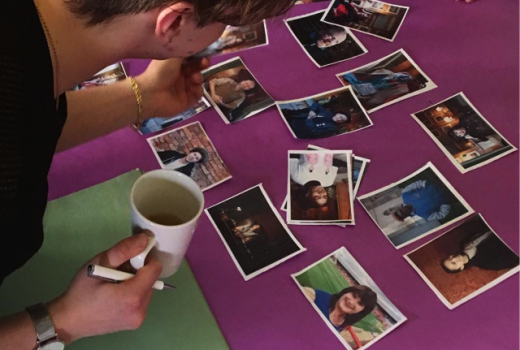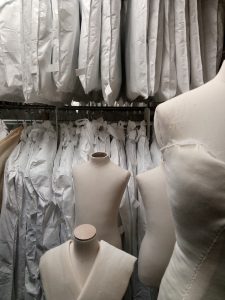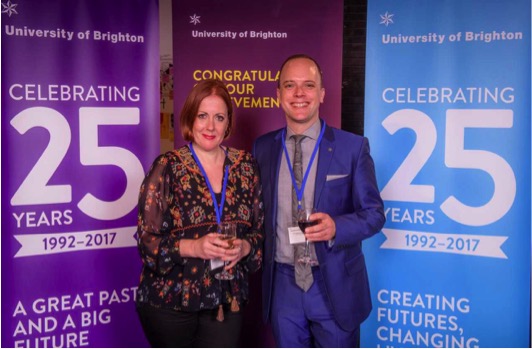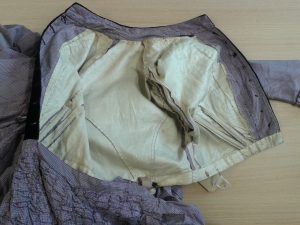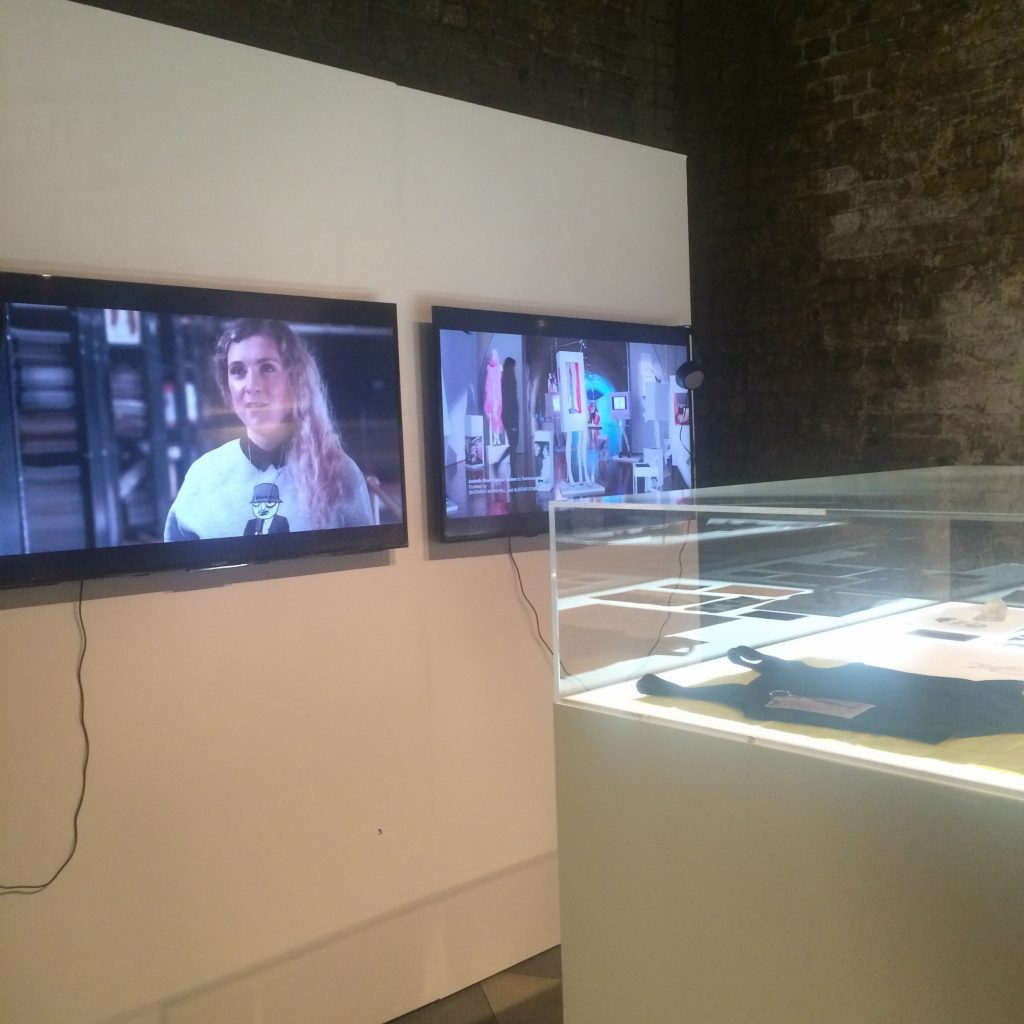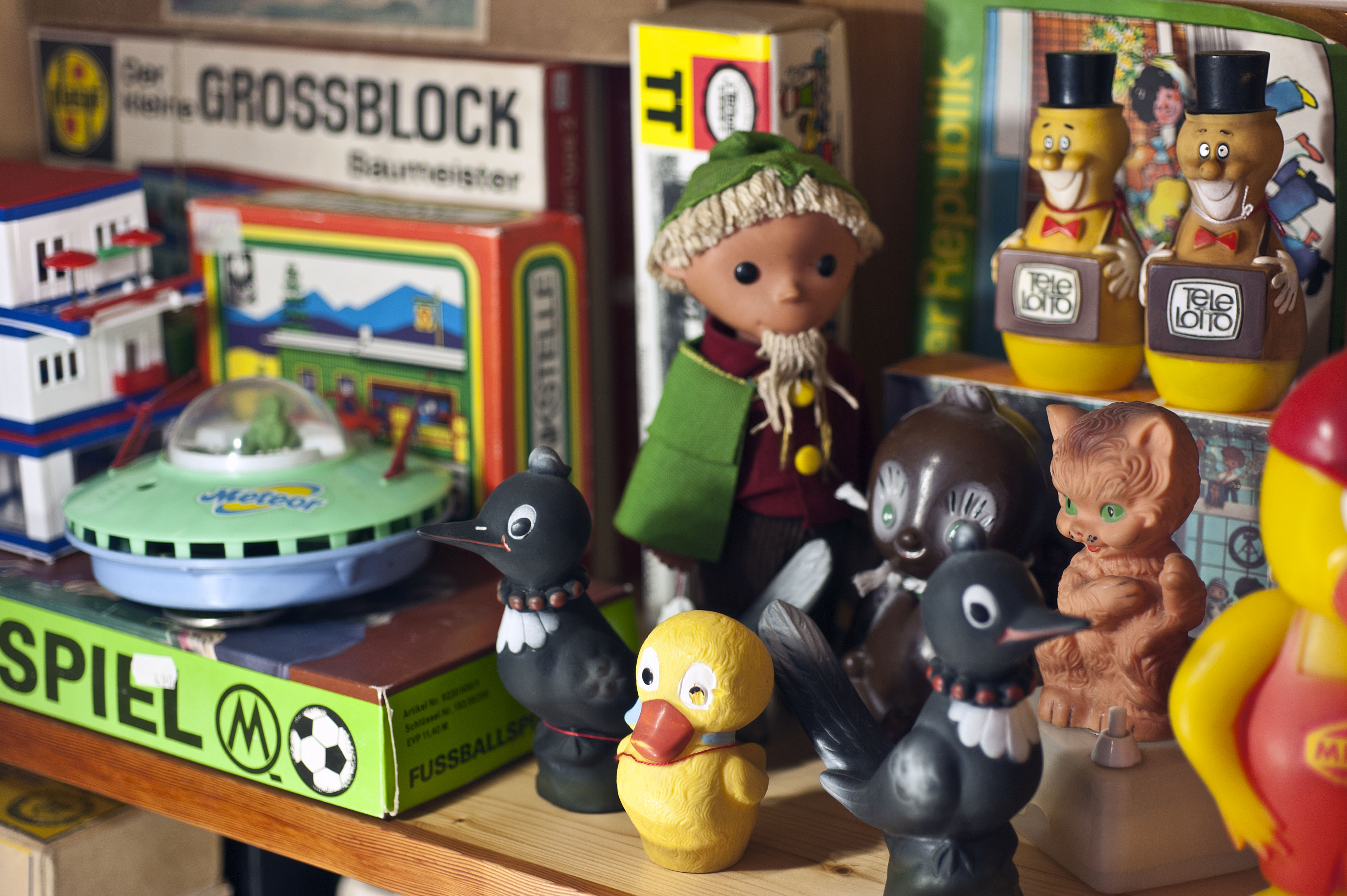MA Curating Collections and Heritage student Jenny Mearns reflects on her placement with the Fashion Collection at Salisbury Museum
As part of the Professional Placements in Collections and Heritage module on the Curating Collections and Heritage MA, I decided to undertake my work placement at the Salisbury Museum in Wiltshire. I am particularly interested in historic dress and textiles, so ideally, wanted to undertake my placement working with a fashion or dress collection. As serendipity would have it, at the time of organising my placement the Salisbury Museum was about to launch the Fashioning Our World Project.
Running from April 2022 – April 2024, the project aims to uncover historic stories of sustainability within the museum’s fashion collection to inspire future generations (specifically young people) to think differently about the fashion system, to treasure what they already have rather than perpetuating the unsustainable cycle of fast fashion.
Initially, I was tasked with investigating the fashion collection to find garments that evidenced sustainable fashion practices, such as mends, repairs, re-purposing, or alteration. This was a huge task, as the fashion collection holds over 3,500 items. I began my search by looking through supporting documentation, such as accession cards and the collections database. This proved to be challenging, as past museum practices historically privileged ‘perfect’ garments and objects, so whilst repairs, mends, alterations, and repurposing were certainly present in the collection, often such information was omitted from supporting documentation. At times, certain phrases on accession cards such as ‘messed about with’ provided hints as to the alterations and hidden stories of sustainability that may be present.
Once I had identified a garment that showed promising signs of sustainable fashion practices, I then physically located and carefully unpacked the garment from the fashion storerooms for further investigation. I have been incredibly lucky in my placement to be able to spend many hours with historical garments, noting signs of wear and use that could so easily otherwise be overlooked. Some included subtle alterations, such as the sleeves of a wedding gown that have been enlarged to exaggerate a fashionable silhouette of the 1850s, while others were more radical, such as a man’s eighteenth-century waistcoat which had been repurposed into a woman’s bodice front over 100 years later. Spending time with the fashion collection has unlocked these fascinating stories of sustainability and ingenuity.

Image 2: Fabric remnants and unpicked fabric pieces from an 1880s dress made by Mrs James of 2 Hanover Square London.

Image 4: Interior of an 1850s wedding bodice, enlarged at the side seam by an insertion of a fabric panel alteration.
In addition to investigating the fashion collection, during my placement I also had the opportunity to expand on my presentation skills, delivering a presentation to members of the Southern Counties Costume Society. This enabled me to build up my confidence in public speaking and, surprisingly, I discovered I enjoyed it!
I was also tasked with compiling a set of guidelines for other museums to reference when searching within their own collections for stories of sustainability, and evidence of repairs, mends and repurposing. This document has now been shared with the Wessex Museums Partnership, and is subsequently being used by collections volunteers.
I thoroughly enjoyed my placement, and gained many practical skills, as well as development on a personal level. Even though my placement is now complete, I continue to volunteer at the museum on the Fashioning Our World project, as I feel very attached to the project and thoroughly enjoy working with the collections.




 Fig. 1
Fig. 1 